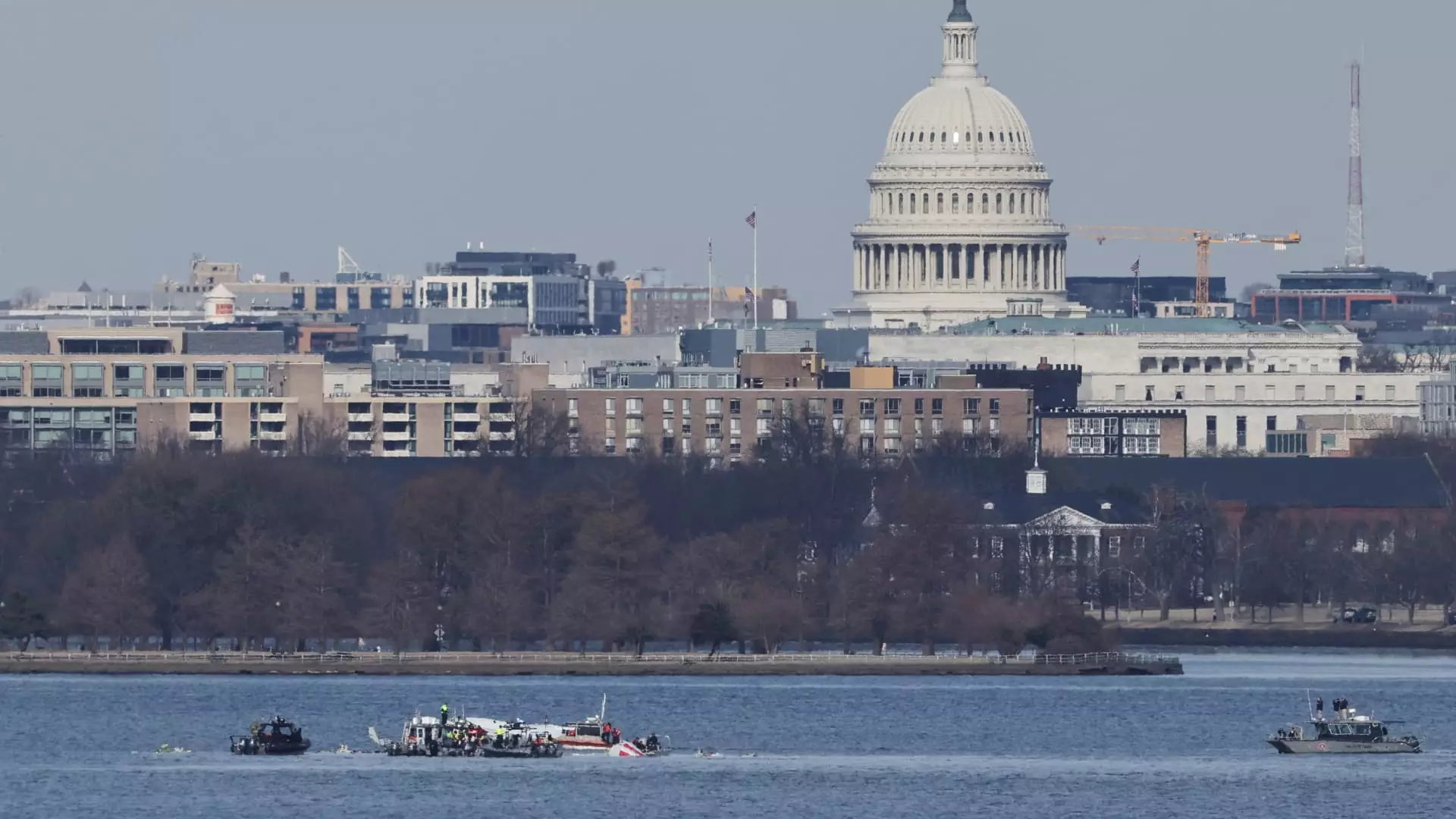The recent collision between a U.S. Army Black Hawk helicopter and an American Airlines jetliner over the Potomac River has left a profound mark on the aviation community and raised significant questions regarding air traffic management in one of America’s busiest airspaces. On a fateful Wednesday night, the Black Hawk, while engaged in a routine proficiency training flight, collided with American Airlines Flight 5342, resulting in the tragic loss of all 64 passengers and crew aboard the jet and all three personnel on the helicopter. This incident marks a grim milestone, as it is recorded as the deadliest air crash in the United States since 2001, raising alarms about the safety protocols governing air traffic control and flight regulations in densely populated regions.
In the wake of the crash, investigators are meticulously examining various aspects of the incident, including flight altitude, communication between air traffic control and the aircraft, and pilot adherence to regulatory standards. The collision occurred as the Bombardier CRJ-700 was approximately 300 feet above the ground, making its final approach to Reagan National Airport when it made contact with the helicopter. This altitude raised a red flag since FAA rules dictate that helicopters must operate below 200 feet in the congested airspace surrounding the capital. The implications of such a discrepancy in altitude have sparked intense scrutiny and prompted an urgent investigation by the National Transportation Safety Board (NTSB).
Regulatory Environment and Compliance
The aviation environment in Washington, D.C., is uniquely congested and complex, characterized by designated helicopter corridors that are specifically designed to manage the influx of air traffic around military bases and other critical infrastructure. NTSB member Todd Inman emphasized the established protocols for helicopter navigation within this airspace, suggesting that both crew members of the helicopter and air traffic controller should have been fully aware of their designated tracks. The Pentagon’s training flights are not uncommon; however, this incident has raised pressing questions about compliance with operational guidelines.
The FAA swiftly reacted to this catastrophe by announcing new regulations aimed at restricting helicopter operations in the vicinity of Reagan National Airport. This move, while necessary, indicates a recognition of an existing oversight in managing the complexities of air traffic in such a critical area.
A crucial aspect of this investigation involves evaluating the effectiveness of air traffic control at Reagan National Airport, particularly during peak hours. Reports suggest that staffing levels may not have been adequate for the volume of air traffic at the time of the incident. Normally, a dedicated controller focused on managing helicopter traffic works alongside other controllers. However, a preliminary report indicated that this position may have been combined with others, potentially leading to communication breakdowns that could have contributed to this tragic outcome. The decision by a supervisor to allow a controller to leave their shift early raises further concerns regarding operational protocols in high-traffic environments.
Both President Donald Trump and Defense Secretary Pete Hegseth have publicly voiced their opinions on the matter, attributing blame to a perceived altitude violation by the helicopter. While their statements may reflect genuine concern, they also highlight an unsettling trend where officials comment prematurely on ongoing investigations. Such declarations can lead to speculation and misinformation, complicating efforts to reach accurate conclusions about the underlying causes of the crash. The responses from high-level officials indicate the growing pressure for accountability and the desire to prevent future tragedies in an era where aviation safety has dramatically improved over the past decade.
As investigations continue, the aviation industry is at a critical juncture. There is an urgent need for reform in air traffic control procedures and adherence to regulatory standards. The tragedy has illuminated potential gaps in communication and procedural compliance, challenging aviation authorities to implement measures that reinforce safety protocols and ensure the effective management of complex air traffic systems.
While the investigation is still ongoing, the implications of this catastrophic collision will undoubtedly reverberate throughout the aviation industry. It serves as a tragic reminder of the stakes involved in air travel and underscores the imperative to prioritize safety and operational integrity in all aspects of aviation management. The lessons learned from this incident could be pivotal in shaping future policy and preventing similar disasters moving forward.

Leave a Reply